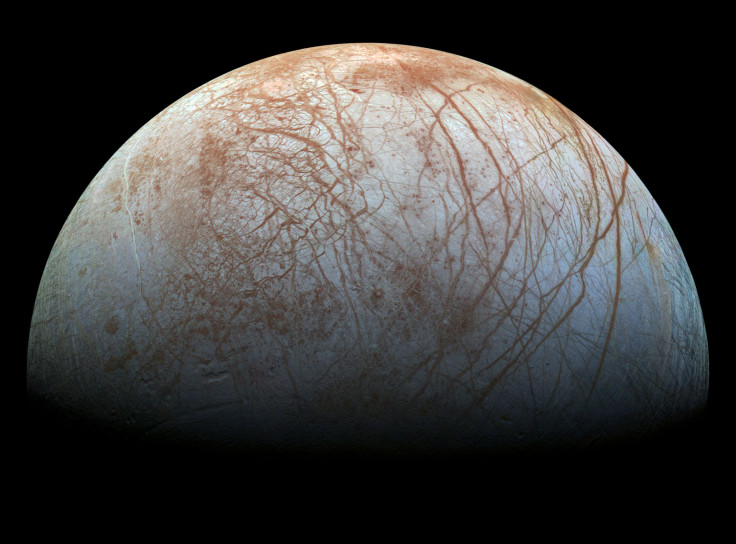Jupiter Moon Europa Shares This Shocking Similarity With Earth, Study Says

Jupiter's moon Europa and Earth may be more similar than initially thought, at least when it comes to their seas, according to a new study.
Europa has been the subject of interest for astronomers due to the natural satellite possibly having the requirements to host life. In fact, NASA has been preparing two separate missions to explore the Jupiter moon for biosignatures and possible alien lifeforms.
But while these missions have yet to launch, researchers from the California Institute of Technology (CalTech) in Pasadena made one intriguing discovery about Europa's surface that may help spacecraft in their search for life in the future.
According to study lead author Samantha Trumbo of CalTech and her team, sodium chloride (NaCl), which makes up table salt, may have spread on the icy surface of the Jupiter moon, based on data obtained by the NASA/ESA Hubble Space Telescope. The researchers claimed that the NaCl may have come from the suspected subsurface ocean, according to the paper published in the journal Science Advances.
The first signs of NaCl on Jupiter's moon were first detected by NASA's Galileo spacecraft, which orbited the gas giant for eight years before plunging to its death in 2003. The spacecraft caught images of odd, yellowish patches on the surface of the satellite. Experiments conducted under conditions mimicking Europa's surface later showed that the "color centers" may be caused by irradiated NaCl.
Using the Hubble's Space Telescope Imaging Spectrograph (STIS), Trumbo and her team attempted to find clearer evidence of NaCl on the Jupiter moon. They eventually found concentrations of the substance on the side of tidally-locked Europa that is constantly facing Jupiter.
Another sign that may point to NaCl coming from the subsurface ocean is that the researchers found the substance mostly in "chaos regions," where material could be rising up from underneath the surface.
The scientists told Space.com that the possible presence of NaCl could mean that Europa's underground ocean may be similar in composition to Earth's, unlike previous theories suggesting it mainly comprised of sulfate salts.
"We do need to revisit our understanding of Europa's surface composition, as well as its internal geochemistry," Trumbo said.
It remains uncertain, however, if sodium chloride dominates the composition of Europa's interior as it is still possible that sulfate salts surpass it. Trumbo pointed out that when meteorites are submerged in water, they release sulfates.
"We are confident that the sodium chloride is coming from the interior," she said. "But the extrapolation to 'the interior is chloride-dominated' is less certain."
But scientists may soon obtain better data to help them gain a better understanding of the huge ocean lurking underneath Europa's surface when NASA's spacecraft reach the Jupiter moon. The Europa Clipper is scheduled to launch in June 2023. The Europa Lander, however, is still in the early stages of development and has yet to be greenlit.
© Copyright IBTimes 2025. All rights reserved.





















